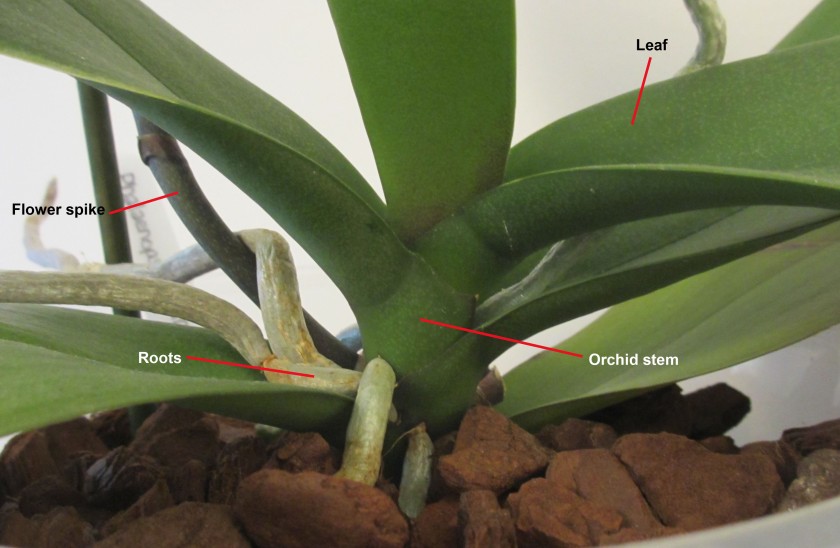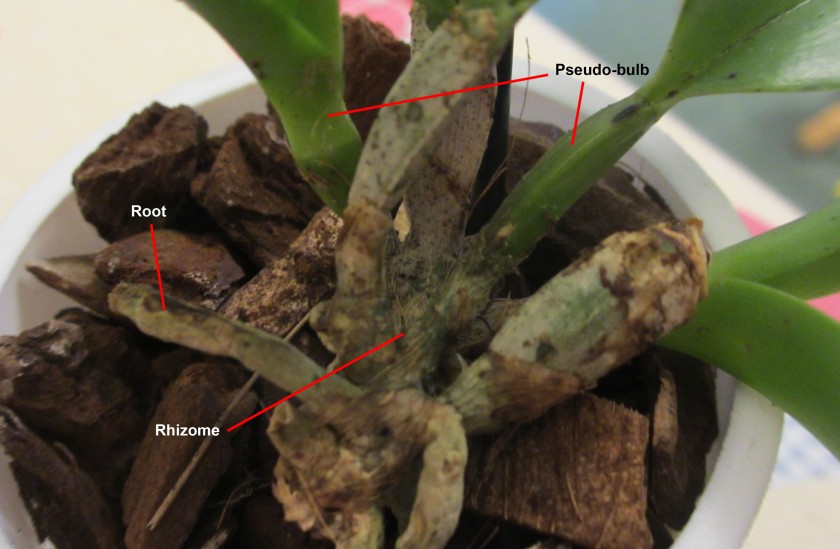With a shiny new Glossary page, it’s time to start tackling some of the terms listed on it. The first of which will be ‘Monopodial’ and ‘Sympodial’. These two terms refer to an orchids growth pattern, and there are distinct differences between them.
Monopodial Orchids
Monopodial orchids grow roots, leaves and flower spikes from one stem. The photograph below demonstrates this with a Phalaenopsis orchid. Monopodial orchids do not create new growths as part of their normal growing pattern. Instead, a monopodial orchid will replace old leaves and roots with new ones. The growth pattern is therefore vertical. Examples of monopodial orchids are Phalaenopsis and Vandas.

When I refer to a monopodial orchid’s ‘new growths’ I do not mean ‘keikis’ (pronounced Kay-Kee). Keiki is a Hawaiian word for ‘baby’. Currently none of my Phalaenopsis orchids are producing keikis so I have no photographs to show you. It is a monopodial orchids way of ensuring its survival by creating a copy of itself. At a later date, I will create a post specifically about keikis.
Sympodial Orchids
A sympodial orchid is one that has growths connected by rhizomes (yes I will be adding this term to the Glossary page). Rhizomes grow from existing pseudo-bulbs, underneath the surface of the media, producing new shoots which develop into new growths. Examples of sympodial orchids include Oncidiums, Dendrobiums and Cattleyas – basically anything that produces new growths which mature into pseudo-bulbs or canes. When dividing a sympodial orchid, clusters of three or more pseudo-bulbs are separated by cutting the rhizome connecting them together.

The above photograph demonstrates that new growths are connected (you will have to trust me that there is a rhizome there…it’s just buried under bark).
Hopefully you understand the difference between these two types of orchid. There are other terms used to categorise orchids, but that will follow in other posts. If you have any questions, please post a comment and I’ll do my best to answer you.
Clare

Hmm, now I need to take another look at my Old lady – I think it has a keiki…
LikeLike